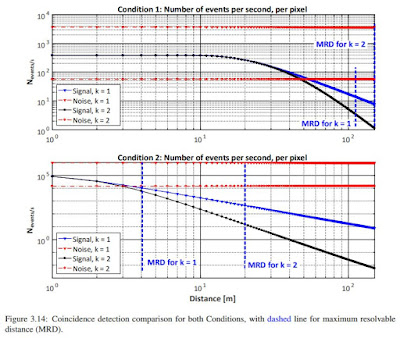Delft University publishes a PhD thesis "Modular time-of-flight image sensor for light detection and ranging: A digital approach to LIDAR" by Augusto Ronchini Ximenes. Other than overview of the stacked SPAD chips and their components, the thesis has a nice system level model of a LiDAR, probably showing the problem that Fastree3D LiDAR startup dealing with.
The defense of the thesis is scheduled on July 12, so that it leaves enough time for critics.
"Direct time-of-flight (dTOF), specifically, requires more elaborate detectors and data processing, but it has the potential of reaching much longer distances at higher speed and accuracy, with the advantage of being robust to high background noise, making it suitable for space, automotive and consumer applications. One known drawback of dTOF, however, is data volume. For instance, automotive applications require over 100m range, only few centimeters accuracy, and multiple measurements for a reasonable precision, which produce data rates that can reach tens or even hundreds of Gbps, in large sensors, thus setting processing constraints to even very efficient GPUs, as well as chip readout capability. It is essential to provide as much on-chip processing as possible, in order to reduce data throughput, thus reducing power consumption and speeding up processing time. Some architectures have been proposed attempting to solve this problem, but the required memory renders them only feasible for an SiPM, single-pixel approach. Another known issue with light detection and ranging (LiDAR) is regarding the interference of multiple systems on each other. A software-based approach has been implemented, but requiring intensive post-processing resources. In this thesis, a novel approach for on-chip processing is proposed. With the use of cutting-edge 3D-stacking technologies, more flexibility and computational power can be spent on the chip, while not compromising fill factor. A novel proposal for dealing with external interferes is introduced, as well as novel phase/frequency locking solution at the sensor level, as a reference for timing measurements."
The system model of LiDAR analyses coincidence detection approach to remove sunlight for both scanning LiDAR (Condition 1) and flash one (Condition 2). The results show how difficult it is to achieve a long detection range on sunny days:





No comments:
Post a Comment
All comments are moderated to avoid spam and personal attacks.